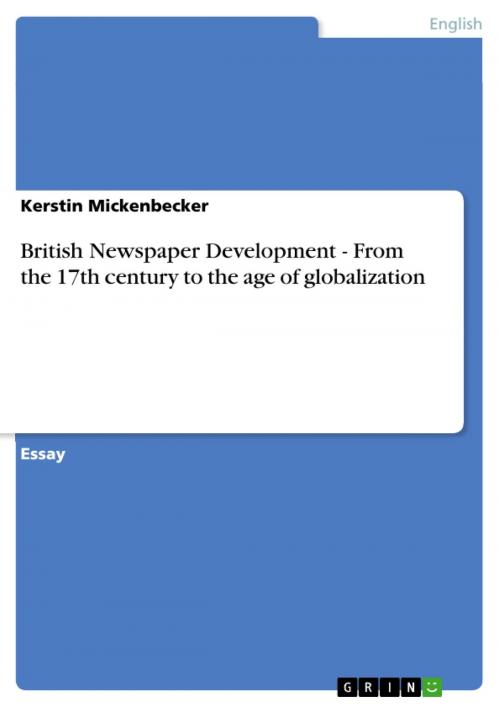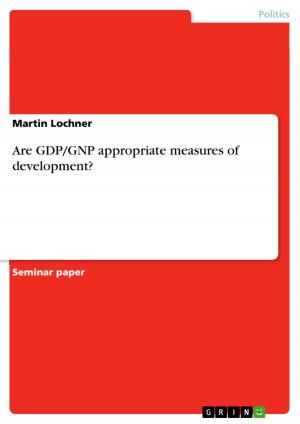British Newspaper Development - From the 17th century to the age of globalization
From the 17th century to the age of globalization
Nonfiction, Reference & Language, Study Aids, ESL, Foreign Languages| Author: | Kerstin Mickenbecker | ISBN: | 9783638525619 |
| Publisher: | GRIN Publishing | Publication: | July 23, 2006 |
| Imprint: | GRIN Publishing | Language: | English |
| Author: | Kerstin Mickenbecker |
| ISBN: | 9783638525619 |
| Publisher: | GRIN Publishing |
| Publication: | July 23, 2006 |
| Imprint: | GRIN Publishing |
| Language: | English |
Essay from the year 2004 in the subject English Language and Literature Studies - Culture and Applied Geography, grade: A, Aston University (Department for Languages and European Studies), course: Media Review, 5 entries in the bibliography, language: English, abstract: Rudyard Kipling's poem 'The Press' exemplifies very clearly the dominant role of the press in the late 19th century. From this, we can conclude that not only the role of the press is a much discussed and disputed topic today but that it was also in the past. It gives us also a hint that 'lessons' of media history are essential in order to get an understanding of its structures, content, and influence. Present-day media arrangements are not natural and unavoidable. A study of media history makes us also aware of alternatives, i.e., how media could have been or can be arranged. In this essay, I will portray the history of the newspaper development from the 17th century until the 21st century. My aim is to point up how the structures, methods of news gathering and diffusion via the mass medium newspaper have evolved by giving a brief overview over the important stages in the development process. Since this medium boasts such a vivid history, and, as mentioned before, media history is an important chapter to learn about, I want to focus upon the earlier periods of newspaper publishing. Constraints of space do not allow to elaborate on the current debates about media issues. The essay is addressed to students of media studies and should be regarded as a basis reading before exploring further fields of media studies.
Essay from the year 2004 in the subject English Language and Literature Studies - Culture and Applied Geography, grade: A, Aston University (Department for Languages and European Studies), course: Media Review, 5 entries in the bibliography, language: English, abstract: Rudyard Kipling's poem 'The Press' exemplifies very clearly the dominant role of the press in the late 19th century. From this, we can conclude that not only the role of the press is a much discussed and disputed topic today but that it was also in the past. It gives us also a hint that 'lessons' of media history are essential in order to get an understanding of its structures, content, and influence. Present-day media arrangements are not natural and unavoidable. A study of media history makes us also aware of alternatives, i.e., how media could have been or can be arranged. In this essay, I will portray the history of the newspaper development from the 17th century until the 21st century. My aim is to point up how the structures, methods of news gathering and diffusion via the mass medium newspaper have evolved by giving a brief overview over the important stages in the development process. Since this medium boasts such a vivid history, and, as mentioned before, media history is an important chapter to learn about, I want to focus upon the earlier periods of newspaper publishing. Constraints of space do not allow to elaborate on the current debates about media issues. The essay is addressed to students of media studies and should be regarded as a basis reading before exploring further fields of media studies.















